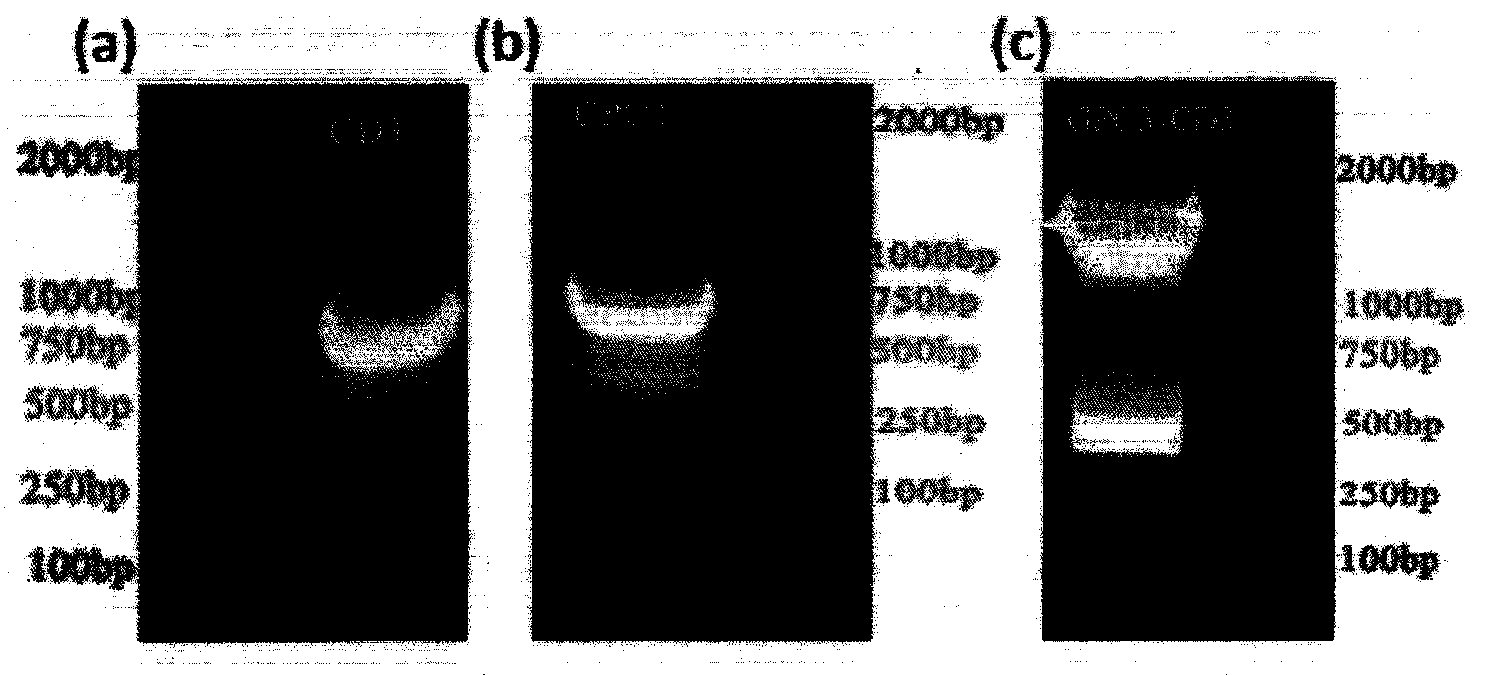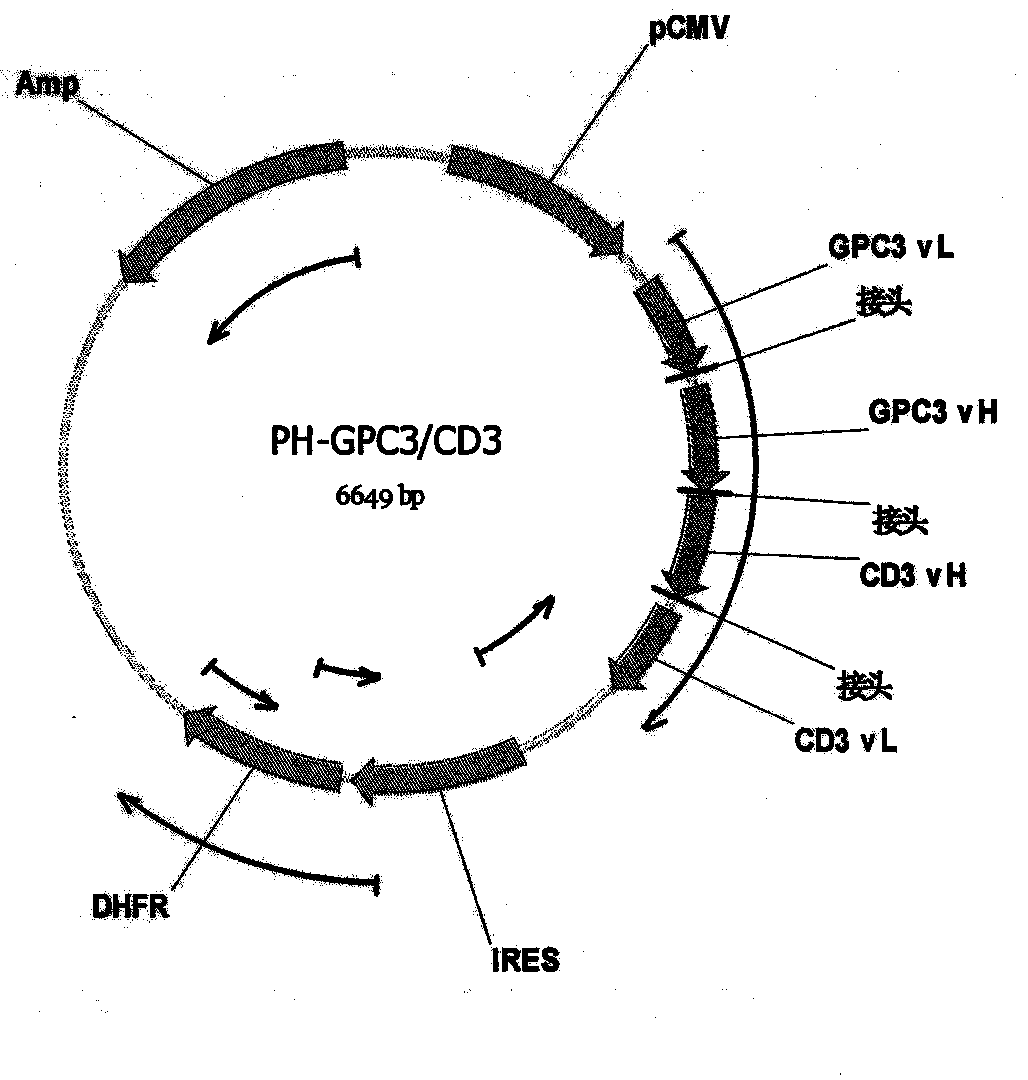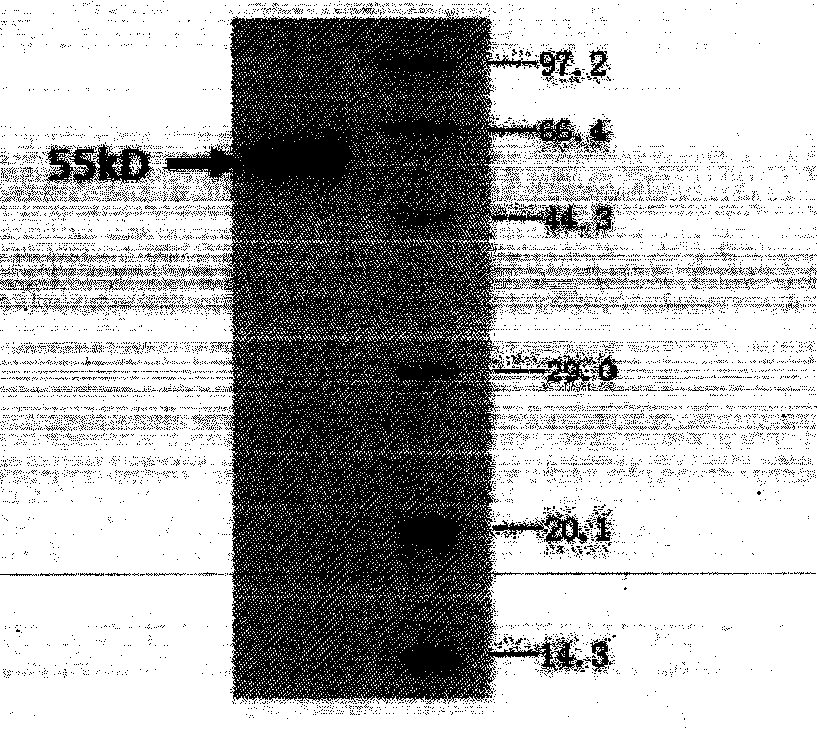Bispecific antibody aiming at phosphatidylinositols protein polysaccharide-3 and T cell antigen
A bispecific antibody, phosphatidylinositol technology, applied in the direction of antibodies, anti-animal/human immunoglobulins, cells modified by introducing foreign genetic material, etc. Antigen binding ability, cannot be guaranteed, cannot guarantee binding ability, etc.
- Summary
- Abstract
- Description
- Claims
- Application Information
AI Technical Summary
Problems solved by technology
Method used
Image
Examples
Embodiment 1
[0097] Example 1 Preparation of GPC3 / CD3 bispecific antibody
[0098] 1) Construction of an expression vector containing a nucleic acid encoding a GPC3 / CD3 bispecific antibody
[0099] VL GPC3 and VH GPC3 The nucleotide fragments are respectively based on the gene sequences of the corresponding VL part (the '086 patent SEQ ID NO: 91) and the VH part (the '086 patent SEQ ID NO: 81) of the GC33 antibody published in the patent document US7919086B2 (hereinafter referred to as the '086 patent) get. The sequence of nucleotides encoding the GPC3 single chain antibody fragment is passed in VL GPC3 and VH GPC3 The introduction of coding between nucleotide fragments (Gly 4 Ser) 3 (Abbreviated as (G 4 S) 3 ) The nucleotide composition of the amino acid sequence linker.
[0100] VL CD3 and VH CD3 The gene fragments were respectively obtained according to the 857-1585th nucleotide sequence of SEQ ID NO: 9 published in the patent document US7112324B1, wherein the nucleotide sequ...
Embodiment 2
[0115] Example 2. Analysis of binding specificity of GPC3 / CD3 bispecific antibody to target cells
[0116] 2.1 Experimental materials:
[0117] cell line
name
Purchased (obtained) from
Huh-7
human hepatoma cell line
Japan RIKEN Cell Bank (Tsukuba, Japan)
HepG2
human hepatoma cell line
American ATCC
CHO-K1
Chinese hamster ovary cells
American ATCC
PBMC*
human peripheral blood mononuclear cells
Shanghai Blood Center
Human Peripheral Blood Leukemia T Cells
Chinese Academy of Sciences Cell Bank
[0118] *Isolated from healthy human donor blood using Ficoll (from Biochrom) density gradient centrifugation method following standard procedures. PBMCs contain T cells.
[0119] 2.2 Experimental method:
[0120] The binding ability of the bispecific antibody GPC3 / CD3 was analyzed by a fluorescence-activated cell sorter (FACS, also commonly referred to as a flow cytometer FACS...
Embodiment 3
[0136] Example 3. Cytotoxic killing effect on tumor cells mediated by GPC3 / CD3 bispecific antibody
[0137] 3.1 Experimental materials:
[0138] Two GPC3-related tumor cells (Huh-7 and HepG2 cell lines) and a control cell not expressing GPC3 (CHO-K1 cell line) were used to analyze the GPC3 / CD3 bispecific-mediated T cell pairing, respectively. tumor cell killing ability.
[0139] 3.2 Experimental method:
[0140] Peripheral blood mononuclear cells (PBMC) were isolated from blood of healthy human donors using Ficoll (from Biochrom) density gradient centrifugation method following standard procedures. After centrifugation, the cells were washed with phosphate buffered saline (PBS) at a concentration of 0.1M and then resuspended in RPMI 1640 complete medium (Gibco) to adjust the cell concentration to 7×10 5 / mL. PBMCs were used as effector cells in cytotoxicity experiments. Different tumor cells are used as target cells. Adjust the concentration of target cells to 7 × 10 wit...
PUM
 Login to View More
Login to View More Abstract
Description
Claims
Application Information
 Login to View More
Login to View More - R&D
- Intellectual Property
- Life Sciences
- Materials
- Tech Scout
- Unparalleled Data Quality
- Higher Quality Content
- 60% Fewer Hallucinations
Browse by: Latest US Patents, China's latest patents, Technical Efficacy Thesaurus, Application Domain, Technology Topic, Popular Technical Reports.
© 2025 PatSnap. All rights reserved.Legal|Privacy policy|Modern Slavery Act Transparency Statement|Sitemap|About US| Contact US: help@patsnap.com



